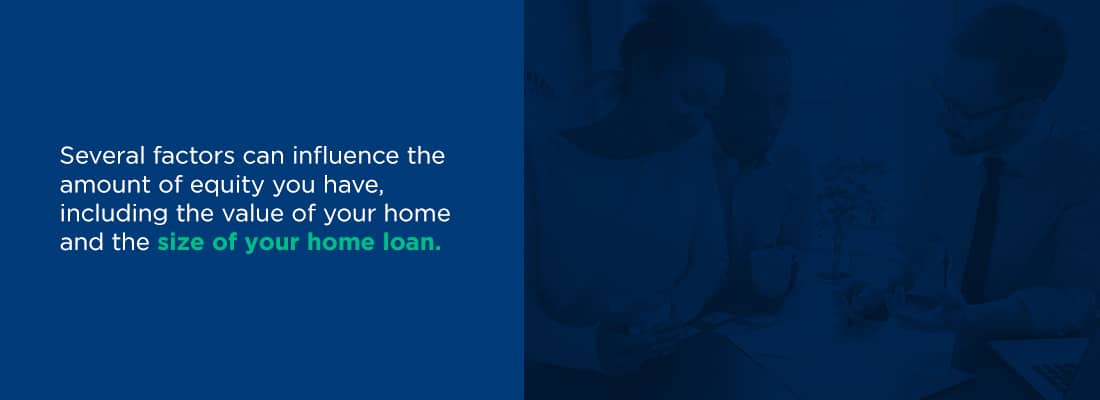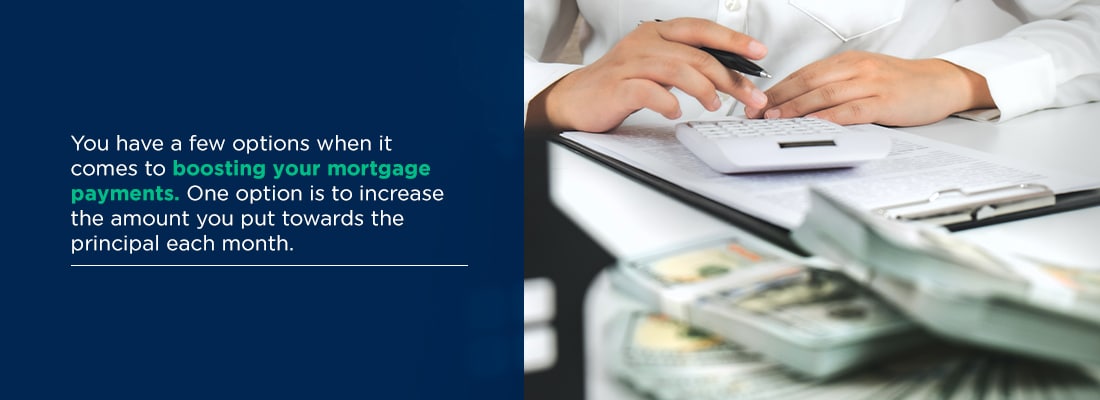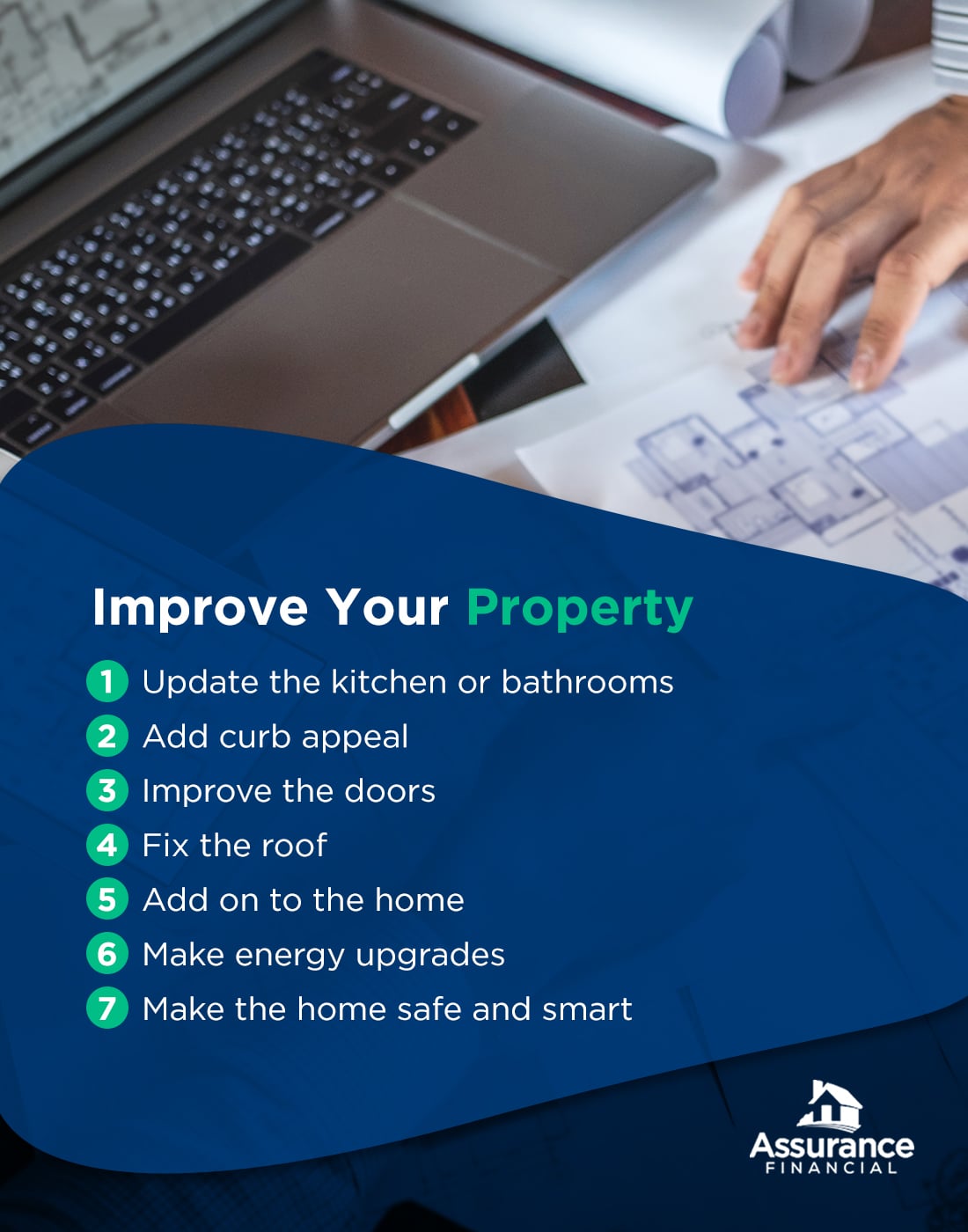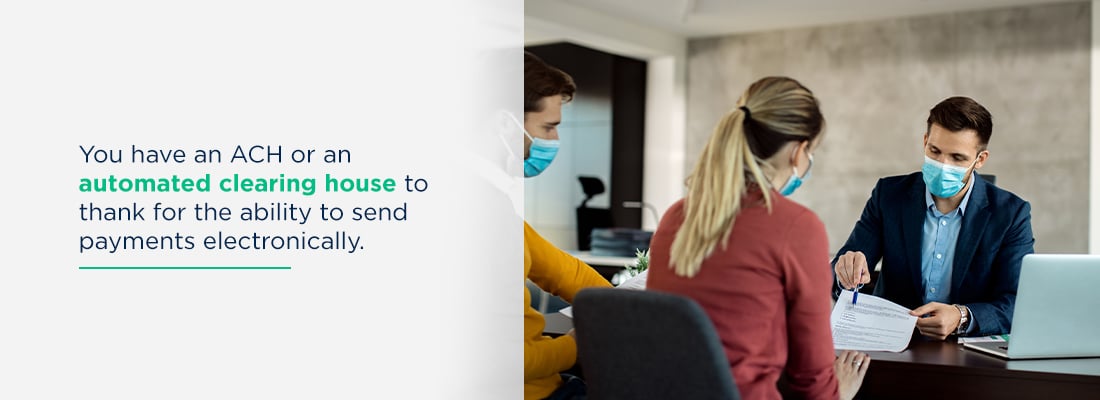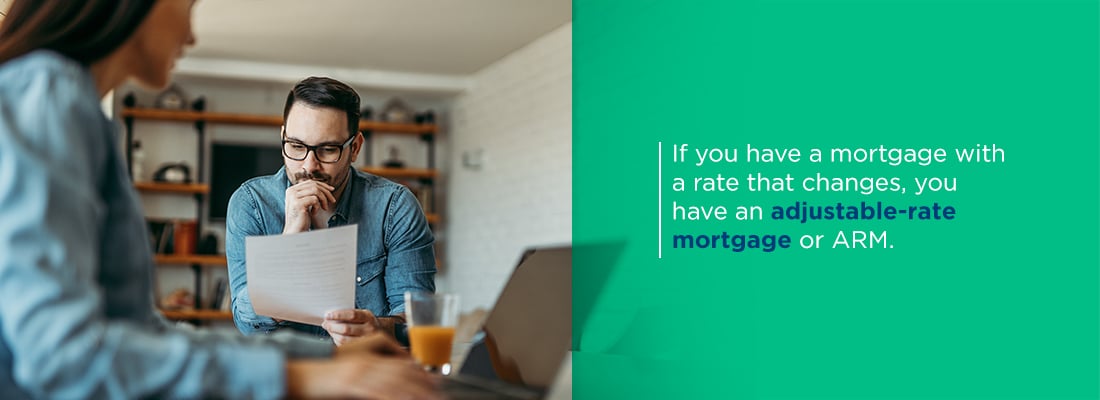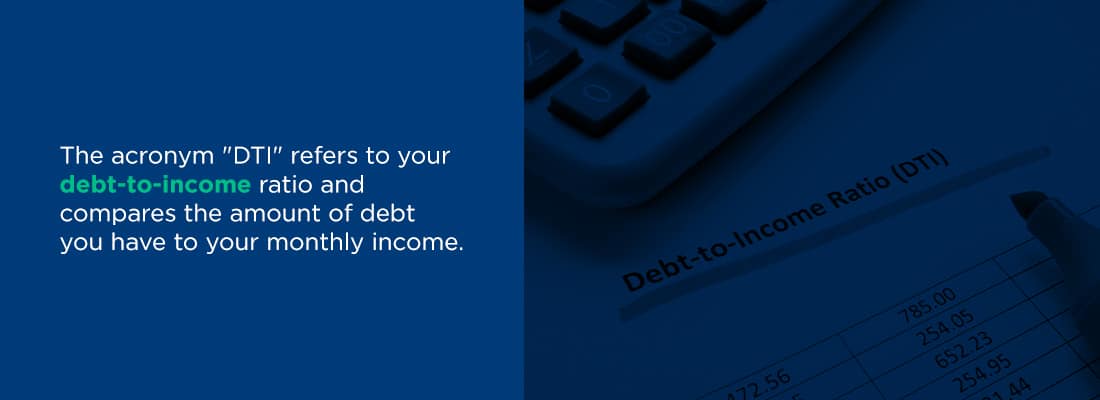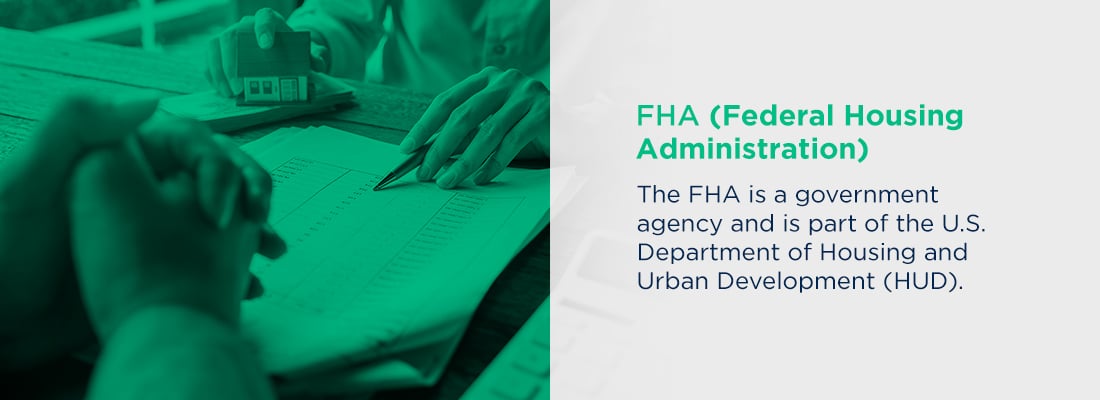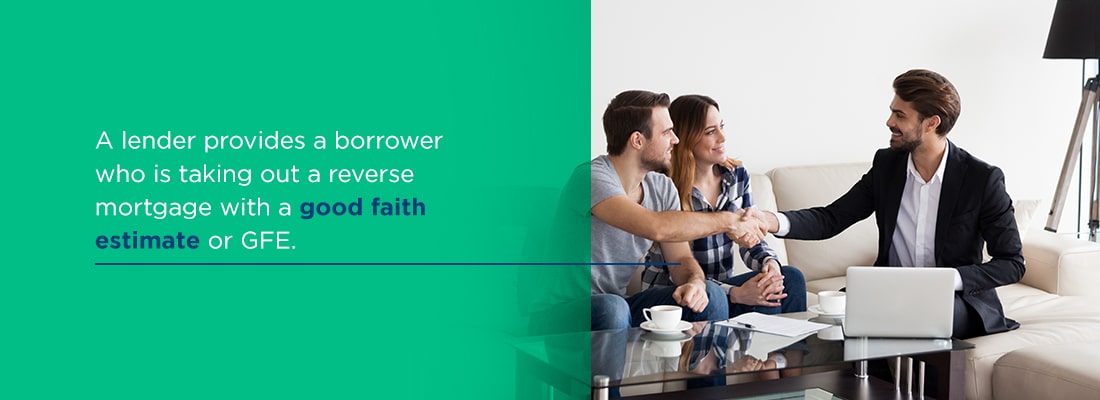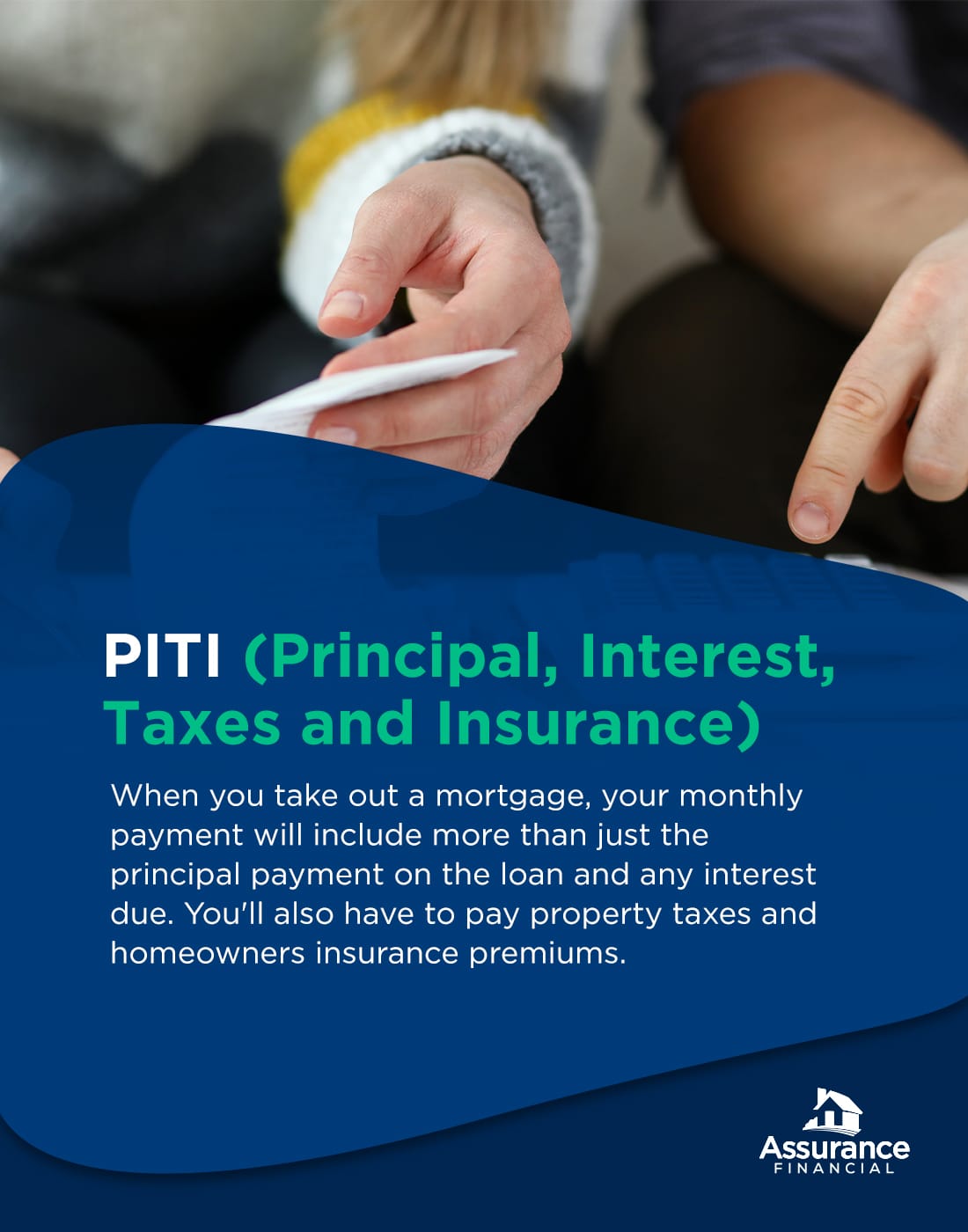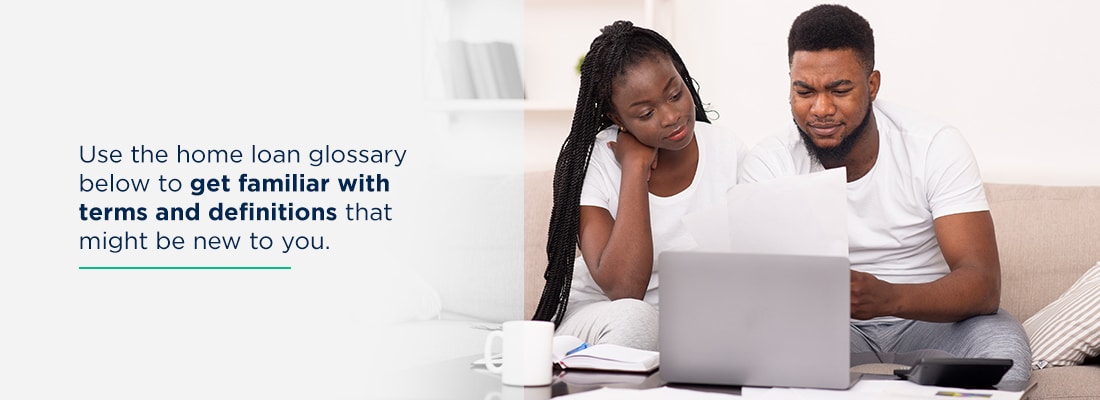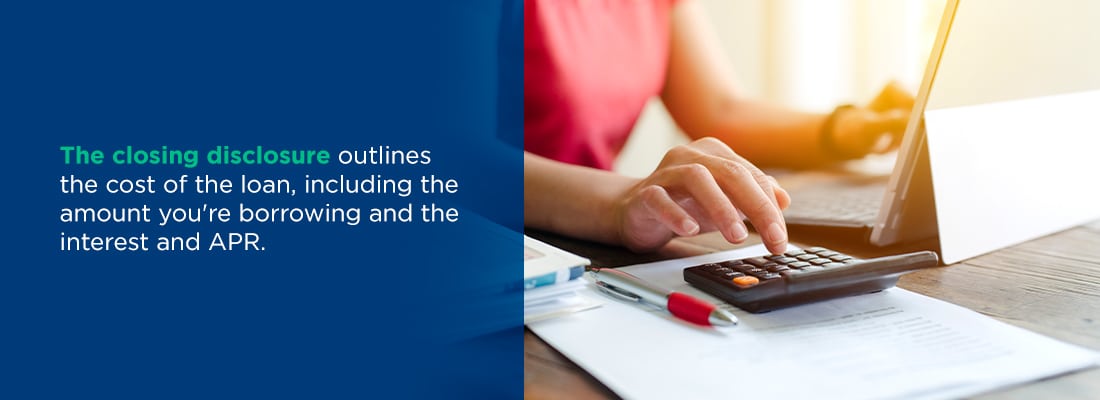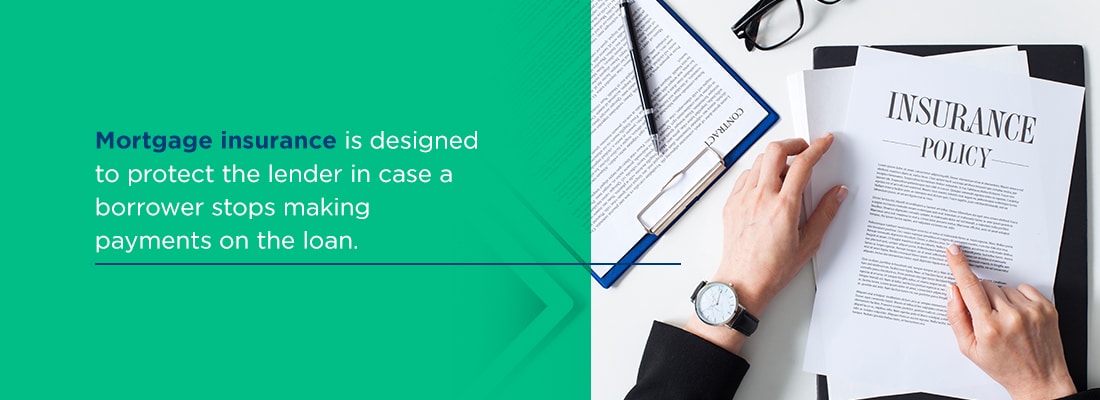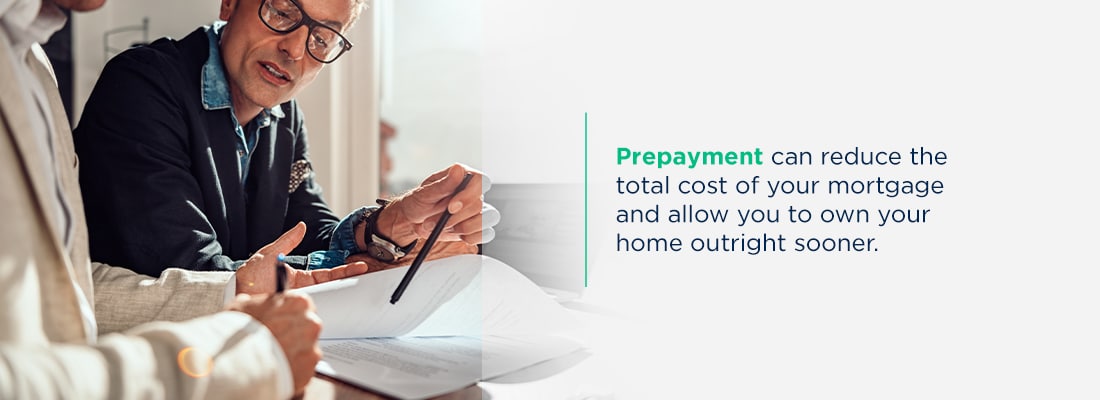Month: April 2021
When you own your home, you can feel a sense of stability and security. You have a roof over your head and a place to raise a family if you choose to do so. You also get full control over how you decorate the home and any changes you make to it.
There’s another benefit to homeownership, and that’s the chance to build equity in your home. Many homeowners look at their property as an investment. If you live in the house for long enough and make enough payments on the mortgage, at some point, your property will be worth more than you paid for it. Another way that a home acts as an investment is through equity. The more equity you have in your home, the more homeowner advantages you can enjoy. Learn more about the value of building home equity and what you can do to maximize it.
What Is Equity?
Home equity is simply the difference between your home’s value and the amount you owe on the mortgage. If you own your home free and clear, your equity is the same as the property’s value. Here’s a quick example of how equity works. Suppose your home’s market value is $300,000. You have a mortgage on the home and still have $220,000 left to pay on it. In this example, the equity in your home is $80,000, or $300,000 minus $220,000.
For many homeowners, equity increases the longer they own their homes. As you make payments on your mortgage, the principal on the loan decreases. Meanwhile, the share of your equity grows.
Although equity usually goes up, it can drop. For example, perhaps you bought a home worth $300,000 and took out a $250,000 mortgage to do so. At the time of closing, your equity in the home was $50,000. Then, a recession happened and the value of homes in your area dropped. Your home now has a market value of $250,000 and you have $225,000 left on your mortgage. Even though you’ve paid off some of your loan principal, since the value of the property has fallen, you now only have $25,000 in home equity.
Why Is Building Equity in a Home Important?
Building equity in your home helps you establish financial freedom and flexibility. The greater your home equity, the better you may be able to weather financial hardships that come your way. Once you establish some equity in your home, you can use the cash value of the equity when necessary. There are two ways to tap into your home’s equity.
One option is to apply for a home equity loan. Just as your mortgage uses your home as collateral, so does a home equity loan. Usually, you can borrow up to 85% of the full amount of equity you have in your home. If your equity is $50,000, your home equity loan can be up to $42,500.
You can use the funds from the loan for pretty much any purpose. Some people use the loan to cover the cost of a home improvement project, while others use the loan to help pay for their children’s college education. Typically, you repay the loan in installments, making monthly payments until you’ve repaid it in full, plus interest. The amount of interest you pay depends on the market conditions, your credit score and how much you borrow.
The other way to tap into your home’s equity is with a home equity line of credit (HELOC). A HELOC is similar to a credit card. You have a credit limit and can borrow up to that limit. Once you repay the amount you’ve borrowed, you can borrow more, provided you’re still in the draw period.
The more equity you have in your home, the bigger your financial cushion if you need to borrow against it. It’s important not to go overboard when borrowing against your home’s equity. If you have difficulty repaying your home equity loan or HELOC, you do risk losing your home, just as you would if you can’t make payments on your original mortgage.
Even if you don’t plan on borrowing against your home, equity matters. If you’re planning to sell the property in the near future, the larger your equity, the more cash you’ll walk away from the closing table with. Having a lot of equity in your current home can mean you have more to put down on your next home. It can also help you afford a more expensive house the next time you are in the market.
How to Build Equity in Your Home
The less you owe on your mortgage, the more equity you likely have in your home. Several factors can influence the amount of equity you have, including the value of your home and the size of your home loan. While you can’t take control of the market, you can do several things to help build equity in your home:
1. Make a Large Down Payment
Although there are many programs that make it possible to get a home loan without putting down a hefty down payment, if you’re interested in building home equity right off the bat, one of the best things to do is make a large down payment.
Let’s say you’re interested in purchasing a home worth $250,000 and you’re trying to decide how much to put down. If you made a down payment of 5%, or $12,500, you would have equity of $12,500 from the start. You’d also have to make private mortgage insurance payments on the loan until you’d paid off 20% of its value.
Your equity would jump to $25,000 if you made a down payment of 10%, and your monthly private mortgage insurance payments would drop. If you can afford a 20% down payment, your equity in the home would be $50,000 from the beginning. You also wouldn’t have to make any private mortgage insurance payments, and your monthly mortgage would be notably smaller than if you put down 10% or 5%.
When deciding if it’s worth it to make a big down payment or not, there are some things to consider aside from home equity. One factor is how long it will take you to save up your down payment. If home values in your area are increasing rapidly and you have enough to put down 5% or 10%, it can make sense to buy now, even though you don’t have a full 20% down payment. By the time you saved enough to put down 20% on a $250,000 home, a property once worth $250,000 might be selling for $300,000 or more in a competitive market.
Another thing to consider is how making a larger down payment will affect your savings. It’s a good idea to have extra money set aside after you buy a house to cover unexpected repairs or to make improvements. If a big down payment will drain your savings, it may be better to save some money for a rainy day, so you don’t have to borrow additional money to pay for home-related expenses.
When buying a home, the amount people put down typically depends on their status as homebuyers. First-time buyers put down a median of 6%, while repeat buyers pay a median of 16% down.
2. Make Larger Mortgage Payments
If making a big down payment upfront doesn’t work for your budget or would put homeownership years out of reach, another way to build equity relatively quickly is to boost the size of your mortgage payments. When you closed on your home, you likely got a copy of the amortization schedule, which detailed how your mortgage payments will break down over the term of your loan, provided you made the same payment each time.
When you make a bigger-than-required mortgage payment, that schedule is completely updated, as you’ll be reducing the size of your principal and speeding up the repayment process. You’ll also be building equity in your home by reducing your debt obligation. Even paying an extra $100 per month reduces your mortgage amount, improving your equity.
You have a few options when it comes to boosting your mortgage payments. One option is to increase the amount you put towards the principal each month. Many mortgage providers give you the option of paying extra towards the principal when you schedule your monthly payment. You can choose to pay an additional $100, $500 or more each month, based on your budget.
Another way to make bigger mortgage payments is to pay more often. If you pay half of your monthly mortgage payment every other week, you’ll end up making one extra monthly mortgage payment per year.
You can also decide to make a lump sum, additional payment to your mortgage when you can. For example, if you get a hefty tax refund, you might decide to apply some or all of it toward your mortgage. If you inherit money, you can put it toward your mortgage, reducing the size of your principal and boosting your home equity.
3. Improve Your Property
Bringing down your mortgage principal is one way to raise your home equity. The second option is to increase the value of your property. The good news is that there are things you can do to improve your property and its value. Here’s how to build home equity with home improvements:
- Update the kitchen or bathrooms: Kitchens and baths tend to be the rooms that really sell homes. The better and more desirable your home’s kitchen and bathrooms are, the more you can ask for when selling it and the higher the property’s value. A minor, mid-range kitchen remodel might boost the value of your home by $18,206 and allow you to recoup about 78% of the cost of the remodel.
- Add curb appeal: Improving your home’s curb appeal can increase its value by about 7%. Think of it this way, more buyers will be interested in a property that looks attractive and inviting from the outside than in a property that looks like it’s in need of some TLC. Boosting curb appeal doesn’t have to cost a lot, either. Adding a few planters, repainting the porch and door and making sure the lawn is trimmed and trash is picked up can go a long way.
- Improve the doors: Although people often focus on the aesthetics of the home when they think about value, the bones of a home matter, too. In fact, a home with good bones and practical upgrades is often worth more than a house that doesn’t have those features. Replacing older front doors and garage doors with high-quality, more efficient options is going to raise the value of your home. When choosing replacement doors, think of efficiency and how well they seal the home to keep warm or cool air from escaping. You also want to consider security to enhance people’s feelings of safety when they are on the property.
- Fix the roof: Roofs can be expensive, and buyers are drawn to a home that has a new roof compared to a property with an old one that they might have to replace themselves. How much it may cost to replace your roof can vary based on the materials, but you can typically expect the project to boost the value of your home anywhere from $16,000 to $24,000. Many homeowners recoup about 60% to 66% of the project’s cost when they sell the property.
- Add on to the home: Size matters when it comes to home value. A three or four-bedroom home is going to be worth more than a two-bedroom home. If you have space and the budget, it can make sense to add on to the property. Building an addition can also be a good option if your family size is growing and you’re not ready to sell your home and move.
- Make energy upgrades: A home that’s energy-efficient is more attractive than one that has high utility bills. Energy-efficient homes tend to be more comfortable, even in extreme weather, than non-efficient homes. People are willing to pay more for a house with Energy Star rated appliances, low utility bills and improved comfort. Some efficient upgrades you can make include improving the HVAC system or furnace, installing better windows and replacing older appliances with more efficient models.
- Make the home safe and smart:Smart home technology streamlines people’s lives and can make your home more attractive and valuable. Installing a smart thermostat, smart lights and smart door locks are just a few of the technological updates you can make to improve your home’s value. Safety is another thing to consider. Make sure the home has working smoke alarms and carbon monoxide detectors. Most states require alarms and detectors for a home to be up-to-code.
[download_section]
4. Refinance Your Home Loan
When you first bought your home, you might have taken out a 30-year mortgage. If you’re interested in building home equity more quickly, it can make sense to refinance your loan to a 15-year mortgage. There are some key differences between the two types of loans:
- Time: You’ll repay a 15-year loan in half the time it takes to pay off a 30-year loan. That means you’ll own your home outright much sooner.
- Interest:Usually, 15-year mortgages have lower interest rates than 30-year loans because lenders view them as less risky. A lower interest rate means you pay more toward your loan principal each month, which also helps you build equity more quickly.
- Payment size:You pay more toward a 15-year mortgage each month than to a 30-year loan simply because you’re paying the loan off more quickly. A bigger principal payment means equity builds more quickly.
Depending on what interest rates were like when you applied for your mortgage the first time, you might get a better rate on a 15-year loan, reducing your monthly costs. Also, if you initially had private mortgage insurance on your loan, refinancing can mean that you no longer have to pay it. If the value of your property has increased enough and you’ve paid down enough of your first mortgage, you might have equity of 20% or more in your home when it’s time to refinance.
Before you decide to refinance your mortgage, it helps to crunch the numbers to make sure that doing so will benefit you in the long run. You’ll have to pay closing costs on the loan, which means more money upfront. You also want to make sure you can afford the higher monthly payment on the loan before you can commit to it.
If you’re unsure about committing to a higher monthly payment but can afford to make bigger mortgage payments at the moment, one option is to make payments as if you had a 15-year loan rather than a 30-year loan. You’ll pay down your principal, building equity in the home, but you will also have the option of going back to your standard monthly payments if you lose a job or have a reduction in your income.
5. Let Your Property Value Rise
You might know people who bought homes or apartments decades ago for prices that seem impossibly low today. For example, someone might have bought an apartment on the Upper West Side of Manhattan for $100,000 in the 1970s. Today, that same property is likely worth millions. Although home values can dip during recessions or periods of economic instability, for the most part, they trend upward. If you buy a house today, it’s likely to have a higher value in five or 10 years. Depending on the heat of the market, your home’s value can rise sharply after just a few years.
If you don’t have immediate plans to sell and don’t need to move right away, it makes sense to stay put in your home and let the market take its course. As long as you keep paying down the mortgage and the economy keeps growing, you’re going to see your home’s equity increase.
Interested in Refinancing Your Mortgage? Work With Assurance Financial
Refinancing your home loan lets you take advantage of lower interest rates and helps you build equity sooner. Assurance Financials’ team of licensed loan officers are here to help you through the refinancing process and can help you see if it’s the right option for you. Start your application today or find a loan officer near you.
Sources:
Linked:
- https://assurancemortgage.com/what-is-a-mortgage-payment/
- https://www.consumer.ftc.gov/articles/0227-home-equity-loans-and-credit-lines
- https://www.nar.realtor/sites/default/files/documents/2020-downpayment-expectations-and-hurdles-to-homeownership-report-04-16-2020.pdf
- https://www.remodeling.hw.net/cost-vs-value/2020/
- https://magazine.realtor/daily-news/2020/01/27/how-much-does-curb-appeal-affect-home-value
- https://assurancemortgage.com/is-refinancing-a-bad-idea/
- https://assurancemortgage.com/refinance-your-home/
- https://assurancemortgage.com/apply/
- https://assurancemortgage.com/find-a-loan-officer/
Not Linked:
- https://www.nerdwallet.com/article/mortgages/6-ways-to-build-your-home-equity
- https://www.nerdwallet.com/article/mortgages/how-to-increase-home-value
- https://www.nerdwallet.com/article/mortgages/home-equity-explained-matters
- https://www.investopedia.com/articles/personal-finance/042015/comparison-30year-vs-15year-mortgage.asp
- https://www.nerdwallet.com/article/mortgages/not-just-higher-interest-rates-affecting-mortgage-refinance-possibilities
- https://firsthome.com/5-tips-for-building-equity-in-your-home/
- https://www.homelight.com/blog/what-makes-property-value-increase/
- https://www.bankrate.com/home-equity/how-to-build-equity-in-your-home/
- https://www.thebalance.com/build-equity-315654
When you’re in the process of shopping for a home and a mortgage, you’re likely to encounter what looks like alphabet soup. All those letters and mortgage statement abbreviations can make your head spin. Once you know what mortgage term abbreviations and acronyms stand for, you can navigate the process with ease. Check out some of the most commonly used acronyms, what they represent and where you’re most likely to see them.
Mortgage Term Abbreviations to Know
Do you know your APR from your PITI? Here’s a key to decipher commonly used mortgage and underwriting acronyms.
1. ACH (Automated Clearing House)
You have an ACH or an automated clearing house to thank for the ability to send payments electronically. Instead of writing a check to put down your earnest money, you can send it to your real estate agent using an ACH.
Even if you’re a first-time homebuyer, you’ve probably encountered an ACH before in your life. If your employer pays you via direct deposit instead of a check, you’re getting your money through an ACH. If you pay your utility bills or smartphone bill online through your bank account, you’re using an ACH.
2. AMI (Area Median Income)
Some types of home loans have AMI or area median income requirements. To qualify for those types of mortgages, your income needs to fall below a certain threshold. For example, the Home Possible® mortgage requires an income below 80% of the AMI in a particular census trace. Loans with an AMI limit are typically designed to help people who would otherwise not qualify for a mortgage to purchase a home.
3. APR (Annual Percentage Rate)
The annual percentage rate or APR is the interest rate on a mortgage expressed as a yearly rate. One way to understand APR is the cost of borrowing money. APR includes the interest rate charged on the mortgage, as well as the cost of fees, such as origination fees and broker’s fees.
You use a mathematical formula to determine the APR on a mortgage. First, you add the amount of interest you’ll pay over the loan term and any fees charged. You divide that sum by the total mortgage amount. Then, you divide that by the number of days in the loan term. Next, multiply the result by 365, then multiply that result by 100 to get the APR percentage. The lower the APR, the more affordable the mortgage is and the less you’ll pay over the life of the loan.
4. ARM (Adjustable-Rate Mortgage)
The interest rate you pay on your home can change at certain points during the life of the loan. If you have a mortgage with a rate that changes, you have an adjustable-rate mortgage or ARM. When your rate changes depends on the type of ARM you have. For example, a 5/1 ARM has an introductory rate that is valid for five years. After the fifth year, the rate can change based on market conditions. From then on, the rate will adjust every year.
An ARM can be appealing if interest rates are high and might drop in the future. When interest rates are low, there is a chance the rate on an ARM will increase over time, increasing the cost of the mortgage.
5. ATR (Ability to Repay)
No one wants to take out a mortgage that will be difficult to pay back. A lender particularly doesn’t want to lend more than a borrower can repay, as the lender risks losing a significant sum of money. Lenders use the ability to repay or ATR rule to determine whether a borrower can repay their mortgage.
To calculate ATR, a lender looks at a borrower’s assets, income, monthly costs, employment history and credit history. To abide by the ATR rule, a lender needs to make a good faith and reasonable determination. They also can’t use a teaser or introductory rate to determine a borrower’s ATR.
6. CD (Closing Disclosure)
When you’re about to close on your home, your lender will give you the CD or closing disclosure. The CD is a five-page document listing all the details and costs of your mortgage. It will have your name, the details of your loan, a list of loan costs, a list of taxes and other costs and loan disclosures. The CD also tells you how much cash you need to bring to closing and lists all the transactions that have taken place, such as any credits from the seller.
7. C to P (Construction to Permanent Loan)
If you are building your home, you typically need to first take out a construction loan, not a traditional mortgage, to fund the cost of building the house. A construction loan is typically a short-term loan that only pays for the cost of building a house. Once the home is built, you take out a separate mortgage on the property, using the new home as collateral. A construction to permanent loan or C to P turns into a standard mortgage once construction is completed.
Another name for a C to P is a single-close loan. You may also see this acronym written as C2P, C/P or C-to-P.
8. DTI (Debt-to-Income)
The acronym “DTI” refers to your debt-to-income ratio and compares the amount of debt you have to your monthly income. If you earn $5,000 per month and have $2,500 worth of loan payments each month, your DTI is 50%. DTI is one of the factors lenders use to calculate your ability to repay your mortgage. If DTI is high, a lender might be hesitant to approve you for a mortgage. Generally speaking, the lower your DTI, the better. Usually, the upper DTI limit for a qualified mortgage is 43%.
9. ECOA (Equal Credit Opportunity Act)
Thanks to the Equal Credit Opportunity Act or ECOA, you can’t be refused a mortgage on the basis of your sex, age, marital status, race, religious beliefs, color, national origin or need for public assistance.
The ECOA also prevents lenders from offering you different loan terms based on the previously mentioned factors. For example, a lender can’t give you a lower interest rate because you are a woman or increase your rate because you are over 50 years old. The ECOA also prevents lenders from asking about your plans for having children or not.
10. EMD (Earnest Money Deposit)
You’ve found the house that’s the “one,” you made an offer and it was accepted. To show the seller you’re serious about the purchase, you need to put down earnest money. An earnest money deposit or EMD is a percentage of the home’s sale price, usually about 1 to 3%. If all goes well with the process, the EMD is applied to the final price of the home.
If the house doesn’t pass inspection or the sale doesn’t go through due to an allowable contingency, the buyer gets the EMD back. But if the buyer cancels the sale or backs out for another reason, the seller gets to keep the EMD. In any case, the EMD is held in an escrow account until the sale is finalized.
[download_section]
11. FAIR (Fair Access to Insurance Requirement)
A Fair Access to Insurance Requirement (FAIR) Plan is a type of insurance policy designed to provide coverage to homeowners whose property is considered high risk. FAIR is a state-mandated program and usually costs more than a private insurance policy. For some homeowners, a FAIR Plan is their only option.
With a FAIR Plan, multiple insurance providers offer coverage, spreading the risk out in case something happens in the home. How much coverage you get with the plan depends on your state. Note that not every state offers access to FAIR Plans.
12. FHA (Federal Housing Administration)
The Federal Housing Administration or FHA offers mortgage insurance protection on FHA loans. The FHA is a government agency and is part of the U.S. Department of Housing and Urban Development (HUD). It’s a self-funded agency, generating income from the mortgage insurance it offers. Since the agency was created in 1934, it has provided insurance protection for more than 46 million home loans.
FHA loans make it possible for buyers who otherwise wouldn’t qualify for a mortgage to purchase a home. Mortgages made under the FHA program come from private lenders but have the agency’s guarantee in case the borrower defaults.
APPLY TODAY13. FICO (Fair Isaac Corporation)
When a lender pulls your credit score, you might hear them mention your FICO score. FICO stands for Fair Isaac Corporation, an analytics company that developed the formula used to calculate FICO scores. Although there are other types of credit scores available, FICO claims to be the most widely used. Your FICO score provides a lender with an idea of your borrowing history and how likely you are to repay your loan.
14. FMV (Fair Market Value)
A home’s fair market value or FMV is the price it would sell for under normal conditions. FMV isn’t necessarily the sale price of a home, as other conditions can affect its final price. For example, if the house is in an in-demand area, a bidding war might push its final price above the FMV.
Municipalities often use FMV to determine the tax rate on a home. A home with a high FMV will have higher property taxes than one with a lower FMV.
15. FRM (Fixed-Rate Mortgage)
A fixed-rate mortgage or FRM is the inverse of an ARM. The interest rate on an ARM can change on a particular schedule depending on current rates. But the interest rate on an FRM will be the same throughout the loan’s term.
With an FRM, your mortgage payment will remain constant for the life of your loan. If you happen to apply for your mortgage when rates are low, you won’t have to worry about the interest rate increasing as time goes on. You also have predictable payments throughout the duration of your loan.
16. FSBO (For Sale by Owner)
While many sellers choose to work with a real estate agent when listing and selling their property, some prefer to do things on their own. With a for sale by owner or FSBO property, the seller assumes all responsibility for the transaction. Not working with a real estate agent means they don’t have to pay the agent’s commission, but they could also potentially price their home too low or make a mistake with the paperwork.
17. GFE (Good Faith Estimate)
A lender provides a borrower who is taking out a reverse mortgage with a good faith estimate or GFE. The goal of a GFE is to help borrowers understand the cost of the reverse mortgage and let them compare mortgage offers.
18. HELOC (Home Equity Line of Credit)
Home equity is the difference between the amount a person owes on their mortgage and the value of their home. If a person has positive equity and needs cash for a renovation project or other reason, they can open a home equity line of credit or HELOC and borrow against their equity.
A HELOC is similar to a credit card. There’s a limit, usually no more than 80% of the equity in the home. A person can borrow up to the limit, then repay the loan and borrow more. HELOCs typically have a draw period, during which you can borrow against the property, and a repayment period.
19. HOA (Homeowners Association)
Some properties, such as condos and homes in subdivisions, have a homeowners association or HOA attached to them. When you buy a property with an HOA, you automatically become an HOA member once you close on the home.
HOAs set rules for each property and conditions homeowners need to meet. For example, an HOA might require homeowners to complete certain maintenance tasks annually or might dictate what color the exterior walls of a house can be. Usually, when you buy a property with an HOA, you need to pay an HOA fee, usually monthly.
20. HUD (Housing and Urban Development)
The U.S. Department of Housing and Urban Development or HUD is a cabinet that’s part of the executive branch of the U.S. government. President Johnson created HUD in 1965 as part of the “War on Poverty.” HUD aims to enforce housing laws and address the country’s housing needs. Its programs include the FHA mortgage insurance program, subsidized housing for low-income individuals and families and Section 8 rental vouchers.
21. LE (Loan Estimate)
When you apply for a mortgage, a lender will provide you with a three-page loan estimate or LE. The lender needs to provide you with an LE within three days of getting your application. An LE gives you useful information, including the details of the monthly payment amount, the interest rate and anticipated closing costs. It’s not a final document but can provide you with a general idea of whether you can afford a mortgage at the moment.
22. LT (Loan Term)
The loan term or LT is the length of time you have to pay back a loan. For mortgages, loan terms can be anywhere from five years to 30 years. The longer the LT, the smaller the monthly payment, but the more you end up paying in interest over the life of the loan. Loans with shorter terms also usually have lower interest rates than longer-term loans.
Loan terms can also refer to conditions in your mortgage about borrowing money. Terms can include details like interest rates, penalty fees or special conditions.
23. LTV (Loan-to-Value)
The loan-to-value ratio or LTV compares the principal of a loan to the value of a home. The higher the LTV, the higher the risk for a lender.
For example, if your home’s value is $300,000 and your mortgage is $270,000, you have an LTV of 90%, which a lender might view as a risky loan. In contrast, if your mortgage is $150,000 on a house worth $300,000, your LTV falls to 50%. You can reduce your LTV by making a bigger down payment when you buy a house. With a larger down payment, you are more likely to get a lower interest rate and may not have to pay mortgage insurance.
24. MIP (Mortgage Insurance Premium)
If you take out an FHA loan, you’ll have to pay a mortgage insurance premium or MIP on top of your principal and interest payments. You’ll need to make an upfront MIP payment and will also have an annual MIP, which is broken up into 12 monthly payments. The annual MIP is for the life of the loan.
Don’t confuse MIP with the acronym “PMI,” or private mortgage insurance. Only FHA loans have MIP.
25. PITI (Principal, Interest, Taxes and Insurance)
When you take out a mortgage, your monthly payment will include more than just the principal payment on the loan and any interest due. You’ll also have to pay property taxes and homeowners insurance premiums. In the mortgage world, these terms are bundled together as principal, interest, taxes and insurance or PITI for short.
Knowing the PITI on your mortgage gives you a good idea of whether you can afford the monthly payments or not. A mortgage’s principal and interest may be $1,000 per month, which might work with your income. But if you add the taxes and insurance due, the total PITI might be $1,500, which could be more of a stretch.
26. PMI (Private Mortgage Insurance)
You can take out a conventional mortgage with a down payment of less than 20%. When you put down less than 20%, you’ll most likely need to pay a private mortgage insurance or PMI premium. PMI offers the lender some protection in case you default on the home loan.
PMI and MIP aren’t the same, although they are similar. When you have a conventional loan with PMI, you can remove the mortgage insurance after your LTV reaches 80%, which would be the equivalent of you putting down 20%. If your home value increases quickly, you might be able to refinance your mortgage to remove the PMI sooner than anticipated.
27. QM (Qualified Mortgage)
A qualified mortgage or QM meets certain requirements and is generally considered a stable, lower-risk loan. A key feature of a QM is that the borrower has the ability to repay the loan. When issuing a QM, the lender must make sure the borrower’s DTI isn’t more than 43%. QMs can’t have interest-only payments or allow for negative amortization, meaning the value of the principal can’t increase over time.
28. RD (Rural Development) Loan
A United States Department of Agriculture (USDA) RD loan is designed to help people buy homes in rural or suburban areas. Several types of USDA loans are available, including mortgages offered directly by the USDA and mortgages guaranteed by the USDA, similar to how the FHA guarantees FHA loans. To qualify for a USDA loan, you need to meet income requirements. The house also needs to be in a designated rural or suburban area.
29. TILA (Truth in Lending Act)
Thanks to the Truth in Lending Act or TILA, a lender needs to provide you with the details of a loan’s cost so you can shop around and compare your options. You also have the option of backing out of a loan offer within three days under this act. The TILA also offers protections for credit cards and other forms of credit, not just mortgages.
30. VA (Veterans Affairs) Loan
A Veterans Affairs or VA loan is a mortgage for people who are currently serving in the armed forces or who have in the past. Surviving spouses of veterans can also qualify for VA loans. The VA guarantees part of the loan, so a borrower who might not otherwise qualify for a mortgage can get more favorable terms from a private lender. One notable feature of many VA loans is that they don’t require a down payment. VA loans also don’t have a MIP or PMI payment.
Apply for a Mortgage With Assurance Financial Today
Ready to buy a home? You can apply for a mortgage with Assurance Financial in just 15 minutes. Start your application today and remember we’re here for you if you have any questions about mortgage acronyms or abbreviations.
Sources:
- https://www.consumerfinance.gov/ask-cfpb/what-is-an-ach-en-1065/
- https://www.fdic.gov/consumers/community/mortgagelending/guide/part-1-docs/freddie-home-possible.pdf
- https://www.consumerfinance.gov/ask-cfpb/what-is-the-difference-between-a-mortgage-interest-rate-and-an-apr-en-135/
- https://www.investopedia.com/terms/a/apr.asp
- https://files.consumerfinance.gov/f/documents/cfpb_charm_booklet.pdf
- https://www.investopedia.com/terms/1/5-1_arm.asp
- https://www.consumerfinance.gov/rules-policy/final-rules/ability-to-pay-qualified-mortgage-rule/
- https://www.consumerfinance.gov/owning-a-home/closing-disclosure/
- https://www.investopedia.com/terms/c/construction-mortgage.asp
- https://www.consumerfinance.gov/ask-cfpb/what-is-a-debt-to-income-ratio-why-is-the-43-debt-to-income-ratio-important-en-1791/
- https://www.consumer.ftc.gov/articles/0347-your-equal-credit-opportunity-rights
- https://assurancemortgage.com/applying-for-home-loan-pregnant/
- https://www.investopedia.com/terms/e/earnest-money.asp
- https://www.thebalance.com/fair-plan-policies-2645392
- https://www.hud.gov/federal_housing_administration
- https://www.hud.gov/program_offices/housing/fhahistory
- https://assurancemortgage.com/fha-loans/
- https://www.investopedia.com/terms/f/ficoscore.asp
- https://www.investopedia.com/terms/f/fairmarketvalue.asp
- https://www.fdic.gov/resources/consumers/consumer-assistance-topics/mortgages.html
- https://www.investopedia.com/terms/f/for-sale-by-owner.asp
- https://www.consumerfinance.gov/ask-cfpb/what-is-a-good-faith-estimate-what-is-a-gfe-en-146/
- https://www.consumer.ftc.gov/articles/0227-home-equity-loans-and-credit-lines
- https://www.investopedia.com/terms/h/hoa.asp
- https://www.hud.gov/about/qaintro
- https://www.hud.gov/topics/housing_choice_voucher_program_section_8
- https://www.investopedia.com/loan-terms-5075341
- https://www.investopedia.com/terms/l/loantovalue.asp
- https://www.hud.gov/program_offices/housing/comp/premiums/ufmain
- https://www.consumerfinance.gov/ask-cfpb/what-is-piti-en-152/
- https://www.consumerfinance.gov/about-us/blog/how-decide-how-much-spend-your-down-payment/
- https://www.consumerfinance.gov/ask-cfpb/what-is-a-qualified-mortgage-en-1789/
- https://assurancemortgage.com/usda-loans/
- https://assurancemortgage.com/everything-you-need-to-know-about-usda-rural-loans/
- https://www.occ.treas.gov/topics/consumers-and-communities/consumer-protection/truth-in-lending/index-truth-in-lending.html
- https://assurancemortgage.com/va-loans/
- https://assurancemortgage.com/5-things-know-va-loans/
- https://assurancemortgage.com/apply/
- https://assurancemortgage.com/loan_process/
If you plan to buy a home or refinance an existing mortgage, you’ll likely encounter mortgage loan terms and definitions that may be unfamiliar — especially if you’re buying a house for the first time. Our mortgage glossary can help you better understand the terminology you’re likely to hear or read as you go through the loan application and homebuying process.
Use the home loan glossary below to get familiar with terms and definitions that might be new to you. As you go through the process of buying your home or refinancing a home loan, you can also ask your mortgage lender to explain any terms or phrases that are unclear to you.
Adjustable-Rate Mortgage (ARM)
An adjustable-rate mortgage has an interest rate that can change over the term of the loan. Often, the mortgage has an introductory rate that lasts for a defined period, such as five years. After the introductory period ends, the rate adjusts based on the market rate on a set schedule. You might see an adjustable-rate mortgage written as 5/1 or 7/1. The first number refers to the length of the introductory period, while the second is how often the rate can adjust.
Amortization
Amortization is the process of paying off a loan over a set period. As you make payments on the loan, the principal decreases, meaning the amount you owe drops. If you have a loan that amortizes, once you have made all the payments, you won’t owe anything on the mortgage anymore.
Annual Percentage Rate (APR)
The annual percentage rate is the cost of taking out the loan. It includes the interest rate charged on the mortgage as well as any fees, such as origination fees and closing costs. The APR is shown as a percentage rate and needs to be included on your closing disclosure.
Appraisal
Before you buy a home or refinance a mortgage, your property will most likely need to go through the appraisal process. During an appraisal, a professional will evaluate your home’s condition, how much similar homes have sold for recently and the overall market to determine the value of your home. The appraisal can be more than the price of the house or it can be less. If the property appraises for less than you are trying to borrow, there is a chance your mortgage will fall through.
Assessed Value
The assessed value of your home is how much it is worth in the eyes of the tax agency in your municipality. The assessed value is used to calculate your property taxes. It can be less than the market or appraised value of your home.
Balloon Loan
A balloon loan doesn’t fully amortize over the term of the mortgage. If you have a balloon loan, you can expect to have one large, or “balloon,” payment due at the end of the term. With a balloon loan, you still make monthly payments during the term, but they tend to be small and aren’t enough to pay down the principal fully.
Base Rate
A base rate is the interest rate used as a reference point when setting the rate for an ARM or another loan with a variable rate.
Cash to Close
Cash to close is the amount of money you need to bring with you to closing. Your cash-to-close amount will include the closing costs and the down payment. The closing disclosure you receive a few days before you close will let you know how much you need to bring. You don’t have to bring actual cash with you. A certified check or wire transfer is also permitted.
Certificate of Eligibility
If you are interested in a VA loan, your certificate of eligibility will verify that you are eligible for the loan. The federal government issues the certificate.
Closing Costs
Closing costs are the fees you pay to the lender to finalize the mortgage in addition to transfer fees paid to your local government, appraisal fees, attorney’s fees and title report fees. The exact amount of your closing costs depends on where you are buying and the value of your home.
Closing Disclosure
Your lender will provide the closing disclosure three business days before your closing date. The closing disclosure outlines the cost of the loan, including the amount you’re borrowing and the interest and APR. It also details the costs you’ll need to pay at closing. It’s important to review the disclosure before closing to make sure there are no errors or to correct issues if there are any.
Conforming Loan
A conforming loan meets the requirements set by Freddie Mac and Fannie Mae, two government-sponsored organizations that buy mortgages. The limit for a conforming mortgage varies by area, based on the cost of housing. A mortgage that is above the limit is known as a non-conforming or jumbo loan.
Credit Score
A credit score is a three-digit number that gives a lender an idea of your credit history and the likelihood that you will repay your loan. Several different methods exist for calculating credit scores, and they usually range from 300 to 850. Factors that affect a credit score include the length of credit history, repayment history, variety of credit, amount of credit and your activity, such as applying for credit cards and loans.
Default
Default occurs when a person stops making payments on their mortgage or is otherwise unable to keep up with the terms of the loan — for example, making partial payments instead of the total amount due each month. Defaulting on a mortgage can cause your credit score to drop. If you don’t resume payments or bring the account current, you could lose your home through foreclosure.
Down Payment
The down payment is a portion of the price of the home that you pay upfront. Although 20% is considered the “gold standard” down payment to make, you can get a mortgage and buy a home putting down a smaller amount, in some cases, as little as 3%. The bigger your down payment, the lower the cost of your mortgage.
Earnest Money
Earnest money is a portion of the sale price of the home that a buyer pays upfront, after the seller accepts their offer. The deposit shows that a buyer is serious and allows the seller to take the home off the market. If the buyer backs out of the sale, the seller gets to keep the earnest money. If the sale falls through because of the seller or because of an agreed-upon contingency, the buyer gets the earnest money back.
Equity
Equity is the difference between a home’s value and the amount a person owes on the mortgage. As homeowners pay down the mortgage principal, they can leverage their equity by borrowing against it.
Escrow
A lender might set up an escrow account where they hold money that goes toward your property tax payments and homeowners insurance premiums. Each month, your mortgage payment includes an amount that goes into escrow. When insurance or property taxes are due, the lender pays the insurance company or government with funds from your escrow account.
Fair Market Value
Fair market value is how much your home is likely to sell for if you put it on the market. The fair market value might be the same as appraised value, but it might also be higher.
Federal Housing Administration
The Federal Housing Administration (FHA) is a government agency created to guarantee mortgages and help people who don’t qualify for other types of mortgages to buy a home. Under the FHA loan program, the agency guarantees loans made by private lenders, offering to pay the loans if the borrower defaults. People who take out FHA loans need to pay an upfront mortgage insurance premium as well as a mortgage insurance premium for the life of the loan.
Fixed-Rate Mortgage
A fixed-rate mortgage has an interest rate that remains the same for the entire term of the loan. With a fixed-rate home loan, you can lock in a low rate when interest rates are low. If you buy when rates are higher, you might refinance later if rates drop.
Foreclosure
If a borrower stops making payments on the mortgage, the lender can foreclose on the loan, meaning the lender takes control of the property. During the foreclosure process, the lender will try to gain back the balance owed on the loan, often by selling the property.
Good Faith Estimate
A good faith estimate is a form a lender provides when a person applies for a mortgage or reverse mortgage. It provides a detailed list of the costs that might be connected to the loan.
Home Inspection
A home inspection is a visual inspection of the property that is often part of the homebuying process. The inspection can make the buyer aware of potential issues in a home. A buyer can use the information gleaned from the inspection to negotiate with the seller. Depending on the results of the inspection, a buyer can walk away from the property, the seller can offer to fix things or everything can proceed as normal.
Homeowners Insurance
If you have a mortgage, you will most likely have to get homeowners insurance, which provides coverage if the home is damaged by a storm or fire. Insurance also protects you against theft. You can purchase add-ons to your homeowners insurance coverage if you own a lot of jewelry or other high-value items or if your home is located in a flood plain.
Interest-Only Loan
With an interest-only loan, your payments only cover the cost of interest, at least for a few years. The principal balance remains the same. An interest-only loan can mean that you have a low monthly payment, at least for the first part of your repayment term. Since they are high-risk, it can be difficult to find lenders that offer interest-only loans.
Interest Rate
While the APR is the total cost of the loan, the interest rate is the annual cost. Usually, it is expressed as a percentage.
Jumbo Loan
A jumbo loan, or non-conforming loan, is a mortgage that has a value that is above the conforming limits Fannie Mae and Freddie Mac set. Jumbo loans usually cost more to the borrower than conforming loans and are often more difficult to qualify for.
Lien
A lien is a claim on a property, usually placed by a lender or creditor as a type of security in case a borrower defaults. When you have a mortgage, the lender puts a lien on the property. In some cases, liens can interfere with the sale of a home, which is why a title search and title insurance are often part of the sale process.
Mortgage Insurance
Mortgage insurance is designed to protect the lender in case a borrower stops making payments on the loan. People who put less than 20% down when buying a home usually have to purchase private mortgage insurance and need to make premium payments until they have paid down at least 20% of the value of the home.
Negative Amortization
When a mortgage has negative amortization, the monthly payments aren’t sufficient enough to pay off the interest owed. The remaining interest gets added to the principal balance, making it possible for the amount owed to increase.
No-Closing-Cost Loan
A no-closing-cost loan displaces the closing costs, it doesn’t eliminate them. Instead of paying upfront during closing, the closing costs are rolled into the loan. The lender might add the costs to the loan’s principal or they might charge a slightly higher interest rate.
Owner Financing
Owner financing means that the seller of the home is offering a loan to the buyer, not a traditional bank or lender. The seller might offer to finance the entire purchase or offer partial financing.
Points
Points refer to an amount the buyer pays the lender at closing to reduce the interest rate. They are sometimes called mortgage points or discount points. Essentially, they are a way to prepay interest.
Preapproval
The preapproval process gives you an idea of how much a lender will let you borrow and what your interest rate will be. If you go through preapproval, you’ll get a letter from the lender verifying they have reviewed your financial details and that they are likely to let you get a mortgage.
Prepayment
If you pay more on your mortgage than the required monthly payment, you are making a prepayment. Some, but not many, mortgages charge a prepayment penalty, meaning you might have to pay a fee if you make higher than the minimum payment. Prepayment can reduce the total cost of your mortgage and allow you to own your home outright sooner.
Prequalification
Prequalification is an early estimate of the amount you can borrow or if you’d be approved for a mortgage. It’s less formal than a preapproval and doesn’t represent a commitment by the lender. It can be a good starting point to see if buying a home is a possibility.
[download_section]
Principal
The principal is the amount of money you’ve borrowed and owe on your mortgage. As you make payments, some of the payment goes toward the principal each month, lowering the amount you owe. If you pay extra on your mortgage, you can designate the additional payment to go toward the principal to speed up the time it takes to pay off your loan.
Rate Lock
When a lender makes you an initial offer to lend, they will also likely give you a rate lock, meaning the rate offered won’t change between the day of the offer and the day of closing. A rate lock helps you avoid paying a higher than expected interest rate or APR on your mortgage.
Refinance
When you refinance, you take out a second mortgage and use the proceeds from it to pay off your initial home loan. You can refinance for a variety of reasons, such as reducing your interest rate, shortening the term of your loan or getting cash for another project. During the refinancing process, your home will most likely be appraised again and you’ll need to go through the closing process again.
Seller Concessions
One way to reduce your closing costs is to get the seller to agree to seller concessions, or paying some of the costs. You can ask a seller to pay a percentage of the closing costs or to cover specific costs. Depending on the market, some sellers might offer concessions upfront to make their property more desirable.
Term
The term of a mortgage refers to its duration. The most common mortgage term is 30 years, but 15-year mortgages are also fairly common. It’s also possible to get a 10-year or 20-year mortgage. The longer the term of a mortgage, the lower your monthly payment, but the more you’ll pay in interest over the length of the loan. Shorter-term mortgages also usually have lower interest rates.
Title
The title of a home is a record of who has owned it. Before you buy a property, it’s essential you make sure it has a free and clear title. If someone else has claim to the title, they could step in and interfere with the sale or complicate things after closing. To prevent title disputes, most lenders will require you to buy title insurance and to have a title check completed before closing.
Title Insurance
Title insurance protects the lender or the buyer of a property from claims on the title of a home after the sale. It’s usually required before you get a mortgage.
Underwriting
When a lender reviews your credit, checks your bank accounts and otherwise looks into your employment and financial history, they’re performing underwriting. The underwriting process is a critical part of the mortgage approval process. It allows a lender to finalize the amount of your loan and the interest rate charged. If anything unusual comes up during the underwriting process, a lender might decide not to give you a mortgage.
USDA Loan
A USDA loan is a mortgage either directly from the U.S. Department of Agriculture (USDA) or guaranteed by the USDA. The mortgages are designed to help people buy properties in rural or suburban areas.
VA Loan
VA loans are guaranteed by the Department of Veterans Affairs. They are designed to help people who are veterans or are currently serving in the armed forces to purchase a home. VA loans offer up to 100% financing, meaning a person who is eligible for the mortgage can secure a loan without a down payment.
Walk-Through
A walk-through is the last inspection of a home, made right before closing. During it, the buyer can verify that the seller has made any repairs agreed upon and that the home is otherwise in the same condition it was in when the buyer made their offer.
Wire Transfer
A wire transfer is a way to send money from one bank account to another electronically. It’s an option for paying for closing costs during settlement.
Apply for a Mortgage in Just 15 Minutes With Assurance Financial
Knowing the definition of commonly used mortgage terms can help you through the homebuying process. If you’re ready to get started buying your home or refinancing an existing home, Assurance Financial can help. Apply online today or find a loan officer near you.
Linked:
- https://assurancemortgage.com/what-is-an-amortization-schedule/
- https://www.consumerfinance.gov/owning-a-home/closing-disclosure/
- https://assurancemortgage.com/jumbo-loan-vs-conforming-loan/
- https://assurancemortgage.com/how-to-build-credit-to-get-loan/
- https://assurancemortgage.com/what-to-expect-closing-day/
- https://assurancemortgage.com/what-to-expect-during-a-home-inspection/
- https://assurancemortgage.com/why-get-pre-qualified-before-looking-for-home/
- https://assurancemortgage.com/everything-you-need-to-know-about-30-year-fixed-rate-mortgages/
- https://assurancemortgage.com/15-year-fixed-mortgage-rate/
- https://assurancemortgage.com/usda-loans/
- https://assurancemortgage.com/va-loans/
- https://assurancemortgage.com/apply/
- https://assurancemortgage.com/find-a-loan-officer/
XINNIX Executive Interviews featuring Kenny Hodges,
Assurance Financial Founder, President & CEO
April 15, 2021
XINNIX Founder & CEO, Casey Cunningham, speaks with Kenny Hodges, Assurance Financial Founder, President & CEO, to share the lessons they’ve learned and best practices they’ve put into place over the last 15 months and how they’re preparing to shift to a purchase market on an episode of Inside the Mortgage Mind.



